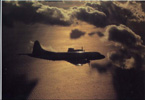ChezDaJez
Posts: 3436
Joined: 11/12/2004
From: Chehalis, WA
Status: offline

|
quote:
I would suggest that the Japanese situation with regards to "wear and tear" would be even worse than the US/Allied situation. For one thing their aircraft mechanics would; from the standpoint of training, experience and culture; be far less likely to take liberties with the instructions in the maintenance manual to keep a plane flying than some former amateur grease monkey from Chicago.
I would agree. Allied mechanics were much more likely to keep worn out aircraft serviceable than were their Japanese counterparts.
As far as operational losses go, I think the game sometimes gets it backwards. In all the games I've played the Zero always has a much higher ops loss rate than does the Wildcat or P-40. The Wildcat and P-40 were notorious for stalling out and spinning in at low speeds plus their ground handling characterisitics were quite poor. The Zero had exceptional low speed handling and handled quite well on the ground. Its only fault their was its poor brakes. I assume that's because the game uses durability ratings to distinguish between damaged and destroyed aircraft in computing ops losses. Still, it just seems funny.
Regardless, the game needs to incorporate aircraft wear and tear factors to reflect reality.
Chez
_____________________________
Ret Navy AWCS (1972-1998)
VP-5, Jacksonville, Fl 1973-78
ASW Ops Center, Rota, Spain 1978-81
VP-40, Mt View, Ca 1981-87
Patrol Wing 10, Mt View, CA 1987-90
ASW Ops Center, Adak, Ak 1990-92
NRD Seattle 1992-96
VP-46, Whidbey Isl, Wa 1996-98
|
 Printable Version
Printable Version












 New Messages
New Messages No New Messages
No New Messages Hot Topic w/ New Messages
Hot Topic w/ New Messages Hot Topic w/o New Messages
Hot Topic w/o New Messages Locked w/ New Messages
Locked w/ New Messages Locked w/o New Messages
Locked w/o New Messages Post New Thread
Post New Thread